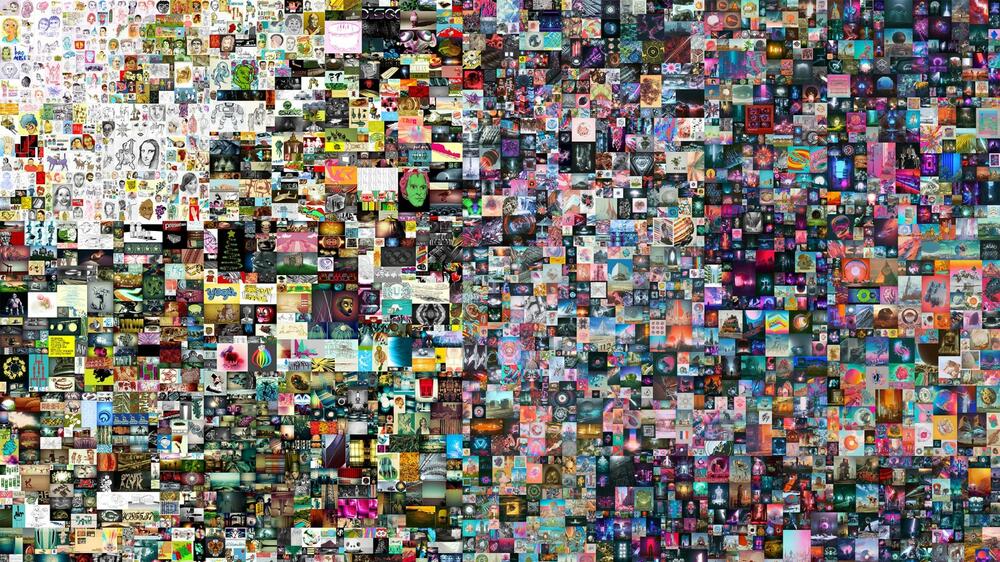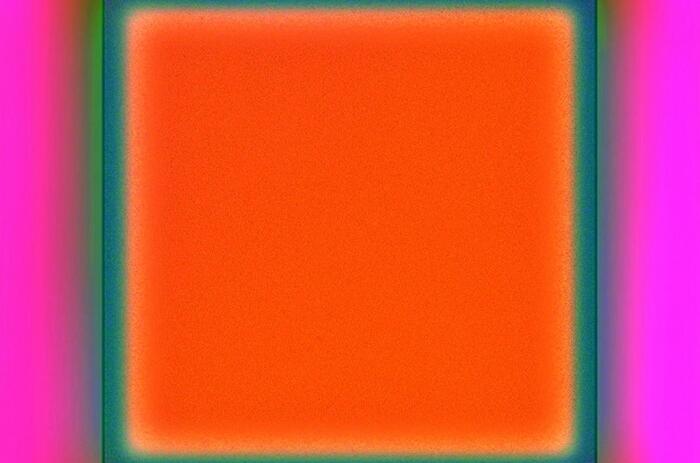NFT - THE FUTURE OF ART?
In February 2021, Christie's auction house sold a digital work by Mike Winkemann, popularly known as Beeple, for the sum of $ 69.3 million, making the almost unknown author the third most sought-after living artist in the world, after David Hockney and Jeff Koons. The news shook the art scene. Not only because of the exorbitant amount obtained by Everydays: The First 5000 Days (2021) - the work in question - but, mainly, because of its immaterial nature and because of the implications of the event in a possible reconfiguration of the art system and some of its more established values.

Digital and intangible
The work is composed of a set of images that the artist created over 13 years and uploaded to his Instagram account. These images were shared for free and continue to be available in the app. What the buyer acquired was an NFT (Non Fungible Token), a digital instrument that ensures that he is the sole owner of the “original” work, even though it may be reproduced indefinitely on or off the networks. The main objective of this instrument is to create an “artificial scarcity”, that is, to transform into unique or limited something that in essence could be replicated incessantly.
The NFTs are hosted on the Blockchain system, the huge global and decentralized database that supports the cryptocurrency market; Hence, the artistic productions supported by this system are called crypto art. Like bitcoins and ethereums, NFTs have no material basis. No collector who owns a work of crypto art will be able to display it on the walls of his home, in his office or in a private museum. Like billionaires in bitcoins, at most you can proclaim the value of your possession or host it in an application on your cell phone, although the first crypto art museums are beginning to appear on the Internet.
This radical immateriality would have perplexed the founders of conceptualism, who in the 1960s produced non-object works in order to avoid the commodification of art. However, the most curious thing here is that NFTs are basically market artifacts. Its value is not aesthetic, creative or artistic but economic, although, paradoxically, it is based on a traditional rule of the art market: an NFT is worth whatever one is willing to pay for it.
The pleasure of owning nothing
The Everydays auction ... started with a base of $ 100 and lasted for ten days. According to Christie's reports, 64% of the bidders were Millennials or members of Generation Z, that is, people under 40 years of age. The final buyer, known by the pseudonym Metakovan, is a 32-year-old Indian entrepreneur who founded Metapurse, an investment fund aimed at financing and producing crypto art.
Ages are not an accessory data, as crypto art - like cryptocurrencies - is embraced primarily by digital natives. For other generations it is more difficult to accept the existence of aesthetic productions devoid of all objectuality. Immateriality is a kind of leap of faith for NFT lovers, and to prove it, the group of financiers Injective Protocol bought Banksy's work, Morons [White] (2006), for $ 95,000, and incinerated it to transform it in a token. The video recording the action, uploaded to YouTube, includes a manifesto encouraging artists to abandon the production of physical works.
In the NFT market, the absence of materiality is supplemented by an active participation in social networks: offers, purchases and sales are announced on platforms such as Twitter, Discord and Clubhouse, where there are large communities dedicated to virtual transactions. There are also numerous sites where artists offer their works directly to the highest bidder, such as Nifty Gateways, SuperRare, Zora or Artblocks, and their number is constantly growing. This rests on another peculiarity of NFTs: in their design, which is basically contractual, artists can establish requirements and conditions, such as obtaining a commission each time their work is resold. In this way, they obtain an income that is not generally recognized in the resale of material works.
According to market studies, the crypto art went from operating US $ 41,000,000 in 2018 to US $ 338,000,000 in 2020. This data indicates that the NFT market is not new, although it does not have such an extensive history either. The first NFT was sold in 2017. Considering the huge increase in sales volume, it is not surprising that a company like Christie’s has noticed these productions in less than four years. Also the controversial Damien Hirst has already announced the launch of a project that combines paintings and NFT - The Currency Project - with which he surely hopes to earn a lot of money.
However, Chritie's meddling has been heavily criticized in the crypto world. Because if something defends this space, it is the independence from regulations and corporate legitimacy. The appearance of this market giant, and the attraction it produced in large commercial galleries and established artists, has been taken as an affront to a circuit that is somewhat anarchist and defends values such as decentralization and anonymity.
A new paradigm?
Obviously, the NFT boom is first and foremost a market phenomenon. However, its effects on the art ecosystem, both real and potential, should not be dismissed so quickly. We live in a time in which technologies are displacing the material world in most areas of social life, from education to entertainment, from work to the economy and information. It is not strange that in this context art experiences a migration towards virtuality and computer media.
In fact, this migration has already been taking place for quite some time at the level of artistic creation: video art, interactive installations and even robotics or artificial intelligence are more or less common in certain institutional settings. But perhaps one of the questions that we have not yet considered in depth is what is happening with the public. Digital natives do not have the same relationship to the physical world as those of us who forged our perception in the last century. The experience of recollection in front of the work of art, which survived with great effort to the attacks of the avant-garde, does not match the speed, instantaneity and simultaneity of current communication networks. For the younger generations, the aesthetic experience would not seem to be complete without its transmission through social networks or its capture in a selfie. This is no longer just a behavior promoted by electronic devices but a genuine way to enjoy and experiment.
Perhaps the most disturbing thing about NFTs is not their quotes but their utter disregard for the material world, sensitivities, and experiences we were familiar with. Its appearance tests the established aesthetic parameters and invites us to rethink, once again, the limits and legalities of art.






